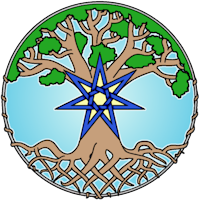About Usui Reiki
A History of Reiki
The story of Mikao Usui’s discovery of reiki in 1922 has many versions, as he never wrote down his full experience, but the core of the story is as follows:
In March 1922, as Master Usui’s life was falling apart, he returned to Mt. Kurama — where he had received his earlier Buddhist training— and enrolled in Isyu Gyo, a training course sponsored by the Tendai Buddhist Temple located there. Through meditation, fasting, and prayer, he hoped to find a solution to his personal problems. On the 21st day, as he was climbing the mountain, he felt a great energy descend upon the crown of his head and fill him. He had found the enlightenment he was seeking!
As he ran down the mountain, elated with his discovery, it is said that he stubbed his toe on a root. As many of us would, he then sat down and placed his hands upon his foot, and found that the energy which had filled him was now emanating from his hands, and curing the pain in his toe. Master Usui was amazed, and found that the energy that had enlightened him was also a healing energy, and he called it Reiki. Teaching others to heal using reiki became his life’s work.
What is Reiki?
Reiki is an energy healing technique for stress reduction and relaxation that helps promote the body’s natural healing process. It was discovered by Mikao Usui in 1922 and developed by him in clinics in Japan, although it is now taught all over the world. The primary methodology of a treatment is by “laying hands” near to the site of injury or energy blockage, either against the skin and clothes or hovering a few inches over them.
The kanji, or Japanese characters, for reiki are two in number. The first roughly means spiritual wisdom or guidance and the second means vital life force or universal energy, and is the same character the Chinese use for Chi in Tai-Chi. Reiki is a spiritually guided version of this universal energy that exists to help us heal ourselves and others, and those who are attuned to it can direct its flow. Reiki is similar to meditation, where a person may become aware of their energetic connection to the universe, but while meditation is passive, reiki is an active connection!
What is Reiki Used for?
Reiki can be used in conjunction with conventional medicine to help treat physical, emotional, or mental illnesses or trauma. It has very few side effects, though most people go through a small amount of readjustment (similar to a massage or acupuncture) for the first day or so following a long session.
Reiki has the most profound effect on clients who are having trouble relaxing and are stressed, because stress can dampen the body’s immune system, causing all sorts of problems. Reiki can help the client relax and can clear away some of the blockages and baggage, allowing true healing to begin reasserting itself.
For many of the same reasons, reiki is also very good for pain relief, especially mild to moderate chronic pain or inflammation. In the realm of mental and emotional troubles, reiki seems to be especially good at calming anxiety, alleviating depression, and stabilizing moods when used with conventional therapies.
In many ways, the positive effects of reiki are very similar to the positive effects from a daily meditation practice, though reiki is much easier to learn! Better yet, reiki can be given by someone else when you do not have the time or energy to practice it, yourself.
